Articles
- Page Path
- HOME > J Musculoskelet Trauma > Volume 34(2); 2021 > Article
- Original Article Risk Factors for Subsequent Contralateral Hip Fracture following Osteoporotic Hip Fracture Surgery
- Kyung-Jae Lee, Jung-Hoon Choi, Hee-Uk Ye, Young-Hun Kim, Kyung-Hwan Lim
-
Journal of Musculoskeletal Trauma 2021;34(2):51-56.
DOI: https://doi.org/10.12671/jkfs.2021.34.2.51
Published online: April 30, 2021

- 634 Views
- 8 Download
- 1 Crossref
- 0 Scopus
Abstract
Purpose
This study examined the risk factors contributing to subsequent hip fractures in patients with osteoporotic hip fractures.
Materials and Methods
Between March 2008 and February 2016, 68 patients sustained a subsequent contralateral hip fracture after surgery for a primary osteoporotic hip fracture (Study group). The patients were compared with 475 patients who had been followed up for a minimum of one year with a unilateral osteoporotic hip fracture (Control group). The demographic data, bone mineral density (BMD), osteoporosis medication, osteoporotic fracture history, comorbid disease, type of surgery, preoperative, postoperative ambulatory capacity, and postoperative delirium in the two groups were compared.
Results
The demographic data, BMD, osteoporosis medication history, comorbid disease, type of surgery, and postoperative delirium were similar in the two groups. At three months after the primary surgery, the poor ambulatory capacity was significantly higher in the study group than the control group (p<0.001).
Conclusion
The ambulatory capacity after primary surgery is an important risk factor in the occurrence of subsequent hip fractures after osteoporotic hip fracture. Cause analysis regarding the poor ambulatory capacity after surgery will be necessary, and the development of a functional recovery program and careful management of the walking ability recovery will be needed.
Published online Apr 23, 2021.
https://doi.org/10.12671/jkfs.2021.34.2.51
Risk Factors for Subsequent Contralateral Hip Fracture following Osteoporotic Hip Fracture Surgery
 , M.D., Ph.D.,
Jung-Hoon Choi
, M.D., Ph.D.,
Jung-Hoon Choi , M.D.,
Hee-Uk Ye
, M.D.,
Hee-Uk Ye , M.D.,
Young-Hun Kim
, M.D.,
Young-Hun Kim , M.D.
and Kyung-Hwan Lim
, M.D.
and Kyung-Hwan Lim , M.D.
, M.D.
Abstract
Purpose
This study examined the risk factors contributing to subsequent hip fractures in patients with osteoporotic hip fractures.
Materials and Methods
Between March 2008 and February 2016, 68 patients sustained a subsequent contralateral hip fracture after surgery for a primary osteoporotic hip fracture (Study group). The patients were compared with 475 patients who had been followed up for a minimum of one year with a unilateral osteoporotic hip fracture (Control group). The demographic data, bone mineral density (BMD), osteoporosis medication, osteoporotic fracture history, comorbid disease, type of surgery, preoperative, postoperative ambulatory capacity, and postoperative delirium in the two groups were compared.
Results
The demographic data, BMD, osteoporosis medication history, comorbid disease, type of surgery, and postoperative delirium were similar in the two groups. At three months after the primary surgery, the poor ambulatory capacity was significantly higher in the study group than the control group (p<0.001).
Conclusion
The ambulatory capacity after primary surgery is an important risk factor in the occurrence of subsequent hip fractures after osteoporotic hip fracture. Cause analysis regarding the poor ambulatory capacity after surgery will be necessary, and the development of a functional recovery program and careful management of the walking ability recovery will be needed.
Fig. 1
Flow chart of the study. f/u: follow-up.
Fig. 2
Frequency of the periods between the initial fracture and a second fracture.
Table 1
Modified Koval Score
Table 2
Fracture-Type in the Study Group
Table 3
Demographic Data of the Study and Control Group
Table 4
Characteristics of the Study and Control Group
Table 5
Characteristics of the Study and Control Group
Table 6
Multivariate Logistic Regression Analysis
Financial support:None.
Conflict of interests:None.
References
-
Schrøder HM, Petersen KK, Erlandsen M. Occurrence and incidence of the second hip fracture. Clin Orthop Relat Res 1993;(289):166–169.
-

 E-submission
E-submission KOTA
KOTA TOTA
TOTA TOTS
TOTS
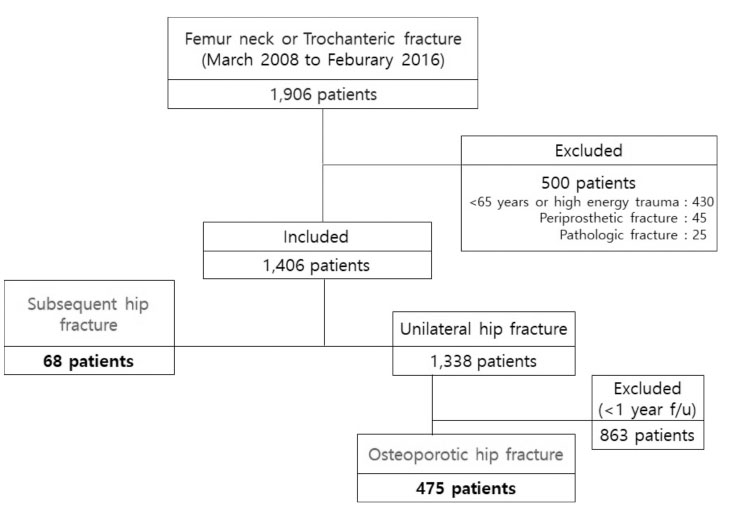

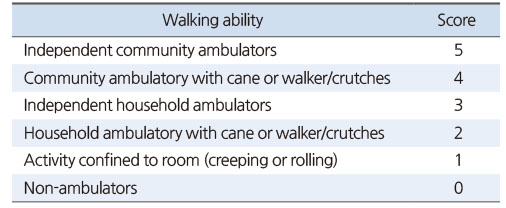

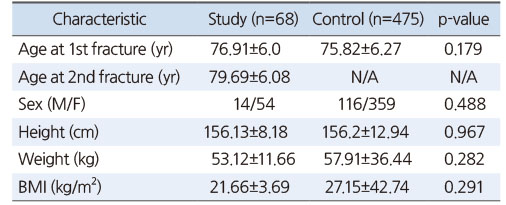
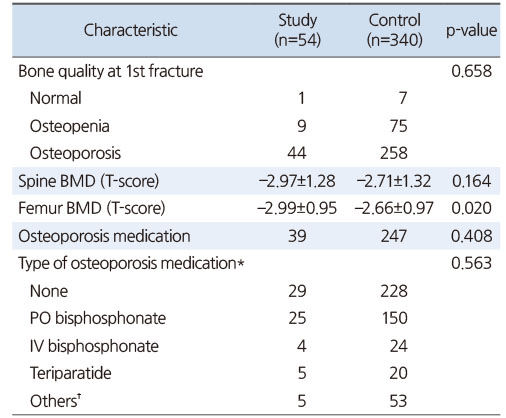
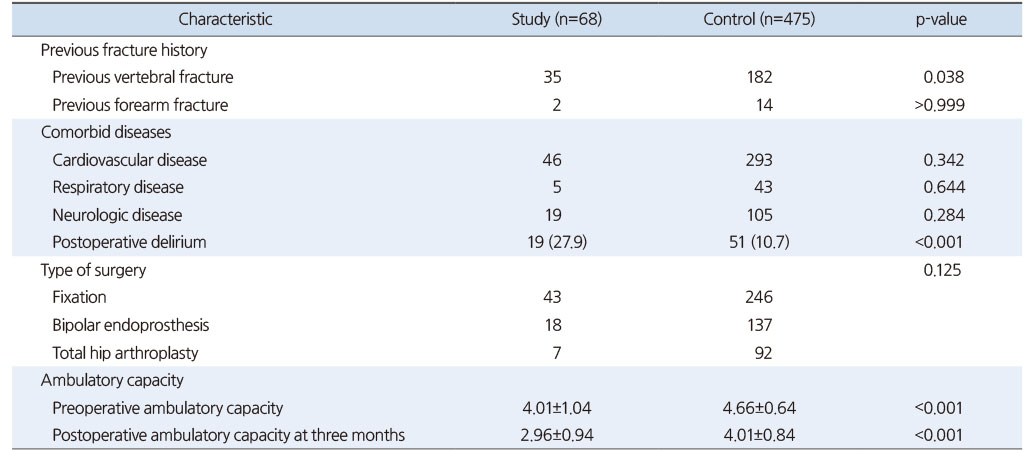


 Cite
Cite

